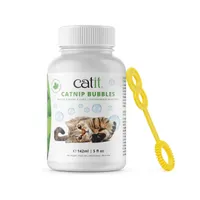How to play with a cat without toys: 7 easy ideas, recommended by a vet
Here's how to play with a cat without cat toys – spoiler alert: it's easier than you think!
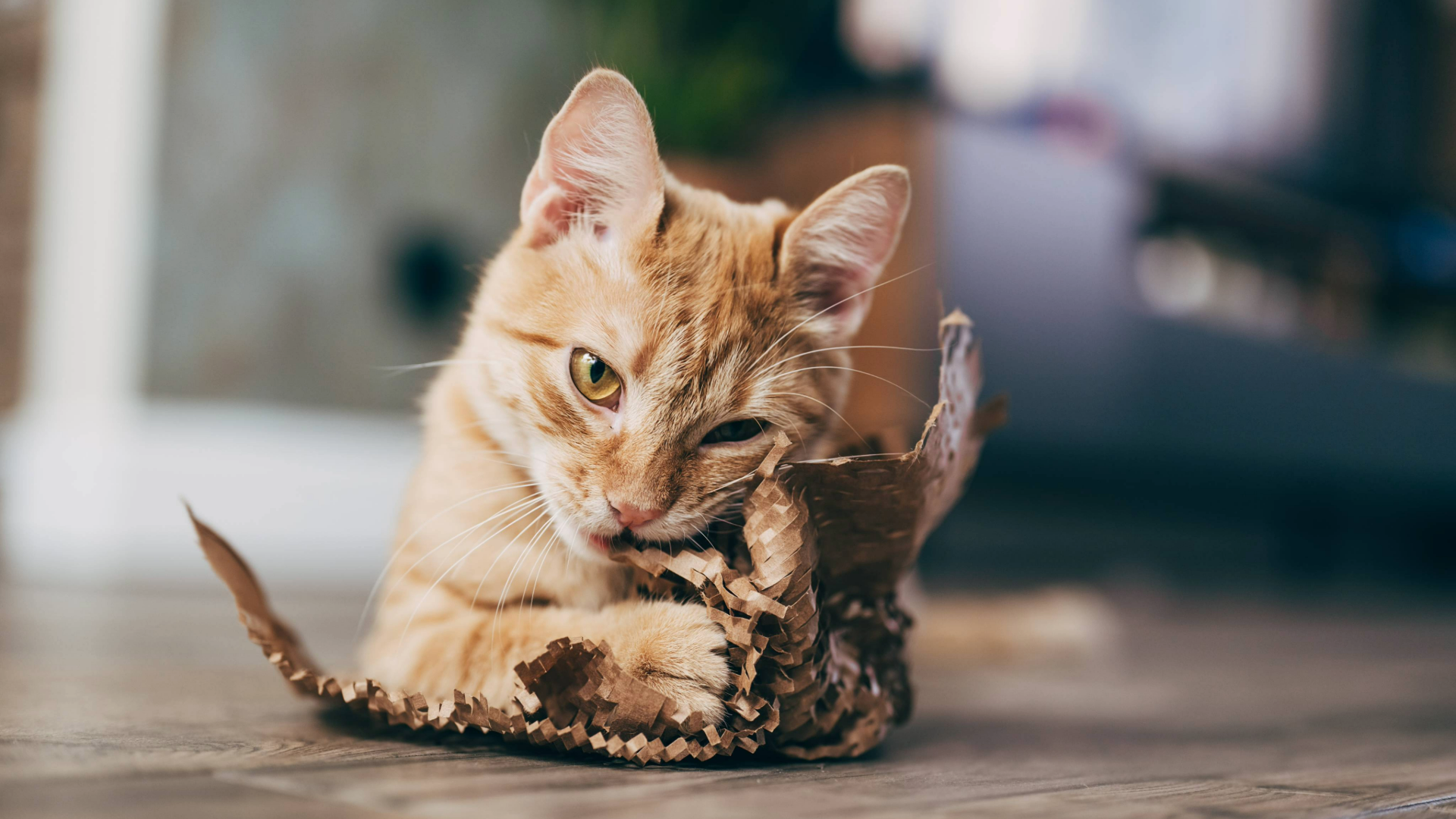
Wondering how to play with a cat without cat toys? Sometimes you might not have your kitty's favorite plaything handy or you may simply want to mix things up and add some much needed variety to their day – and yours!
The good news is that there are so many fun games and activities you can play with your feline friend that don't require toys. While having a few of the best toys for indoor cats around for those times when you're too busy to play is a great idea, there are plenty of ways to play with your cat that don't cost money.
Cat play has so many benefits for your feline. Not only does it offer them that all important physical and mental stimulation, it's also brilliant for preventing destructive or unwanted behaviors. And when it comes to ways to bond with your cat, nothing beats a good play session!
To fill you up with inspiration on how you can play with your cat without toys, we turned to expert vet Dr MacMillan who was only too happy to share some great ideas with us. Plus, she reveals the ideal length for a play session and what to do if your kitty doesn't seem interested in toys. Let's dive in...
How to play with a cat without cat toys
When it comes to the best cat toys, we really are spoilt for choice these days with more and more great options lining the shelves. But sometimes, the sheer variety of toys available can feel overwhelming, not to mention that the cost of constantly buying new toys can quickly add up.
Thankfully, when it comes to how to play with a cat the right way, there's nothing in the cat owner handbook that says you have to use toys. There are plenty of other amazing ways that you can give your cat's brain and body a good workout each day.
Here are a few ideas to get you started...
Get the best advice, tips and top tech for your beloved Pets
1. Fetch
Can cats play fetch? You bet they can! While not all kitty's will enjoy this game, some breeds are particularly known for their love of fetch, including the Devon Rex, Cornish Rex, Manx, Siamese, and Japanese Bobtail just to name a few.
"Crumpled-up paper balls make great low-hassle toys," says Dr MacMillan. "Try throwing these for your cat and rewarding them if they bring it back."
2. Hide-and-seek
When it comes to our favorite fun games to play with cats, hide-and-seek is definitely at the top of the list.
"Try calling your cat or rattling the treat tin – then run and hide!" Dr MacMillan advises. "Hide somewhere your cat can easily access, such as behind the curtains, behind an open door, or under the bed. Give your cat a reward when he finds you."
3. Create a cardboard box playground
Looking for ways to use up all those delivery boxes that end up accumulating in your house until trash collection day? Dr MacMillan suggests saving them up and placing them around a room randomly.
"Cats love boxes!," she says. "Your cat can play hide-and-seek, climb on them, pretend to be a jack in the box or just curl up for a snooze. If they need a little encouragement, make sure the boxes are completely open and place a few treats inside."
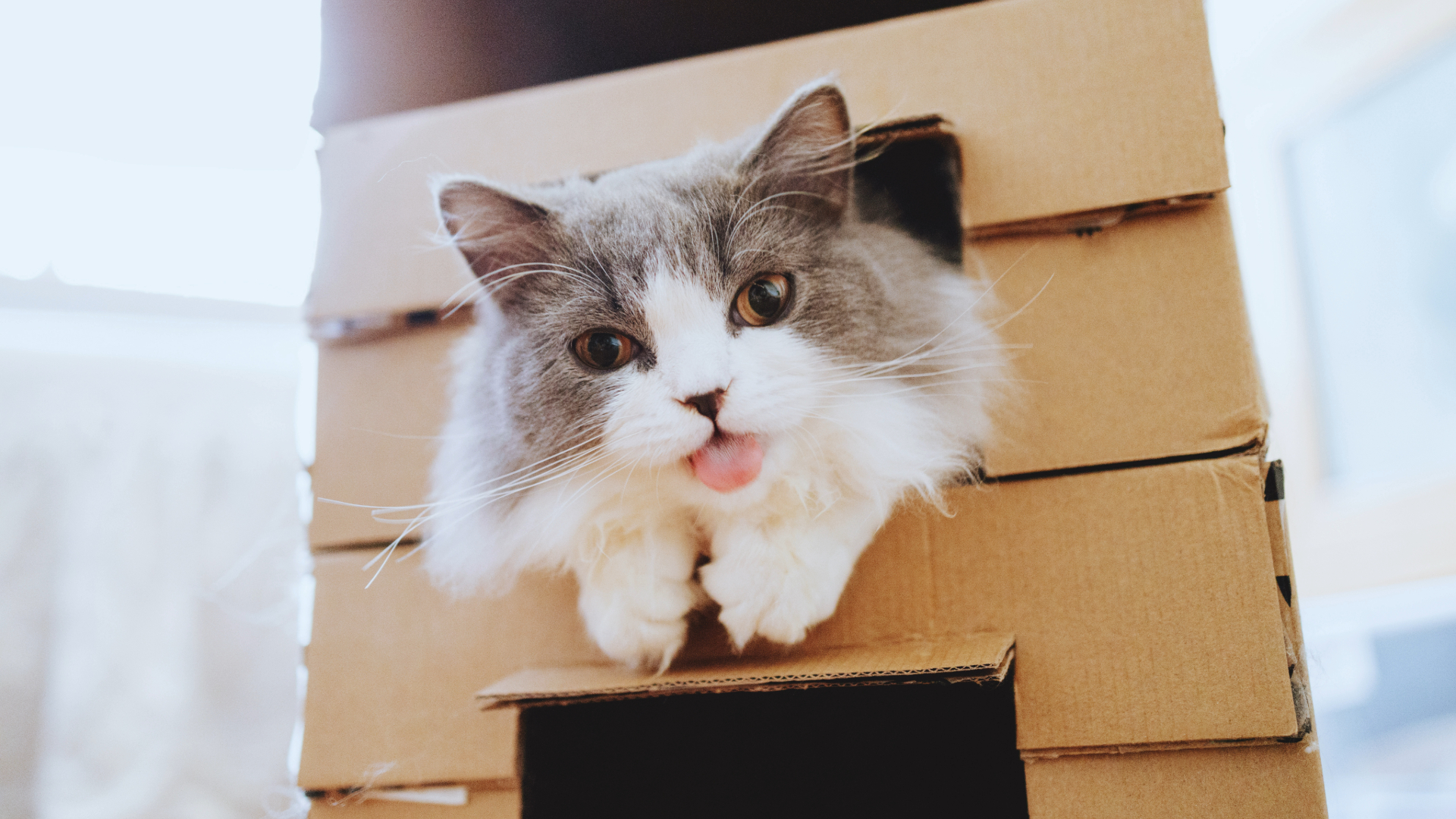
4. Make a DIY puzzle feeder
Yes, you can absolutely buy a cat puzzle feeder, but making one is easier than you might think.
"This could include stacking rolls of toilet tubes on their sides in a pyramid formation. Placing treats randomly in different holes.," Dr MacMillan says.
"Your cat will have to use a paw to get them out! Or you could try cutting an egg carton up to make individual cups you can place over the top of a treat that needs knocking over."
5. Teach them a trick
When it comes to how to teach a cat a trick, many of us shy away from this because we feel like it's going to be overly complicated. But believe it or not, it's actually quite simple. And the best part is, you can do it without a single toy in sight.
"It’s possible to train your cat to do tricks during play sessions such as high five, sit and stay," explains Dr MacMillan. "Keep training sessions short, use a clear command word and use positive reinforcement such as treats and praise to reward them."
For inspiration, check out these great tricks to teach your cat.
6. Use a cat-friendly app on your phone
Want a game that will keep your kitty occupied and let you relax at the same time?
"You could try downloading a cat-friendly app where your cat must use their paws to tap at moving objects," Dr MacMillan suggests. "Don’t forget that cats view screens differently from us though, so don’t feel annoyed if your cat doesn’t want to engage."
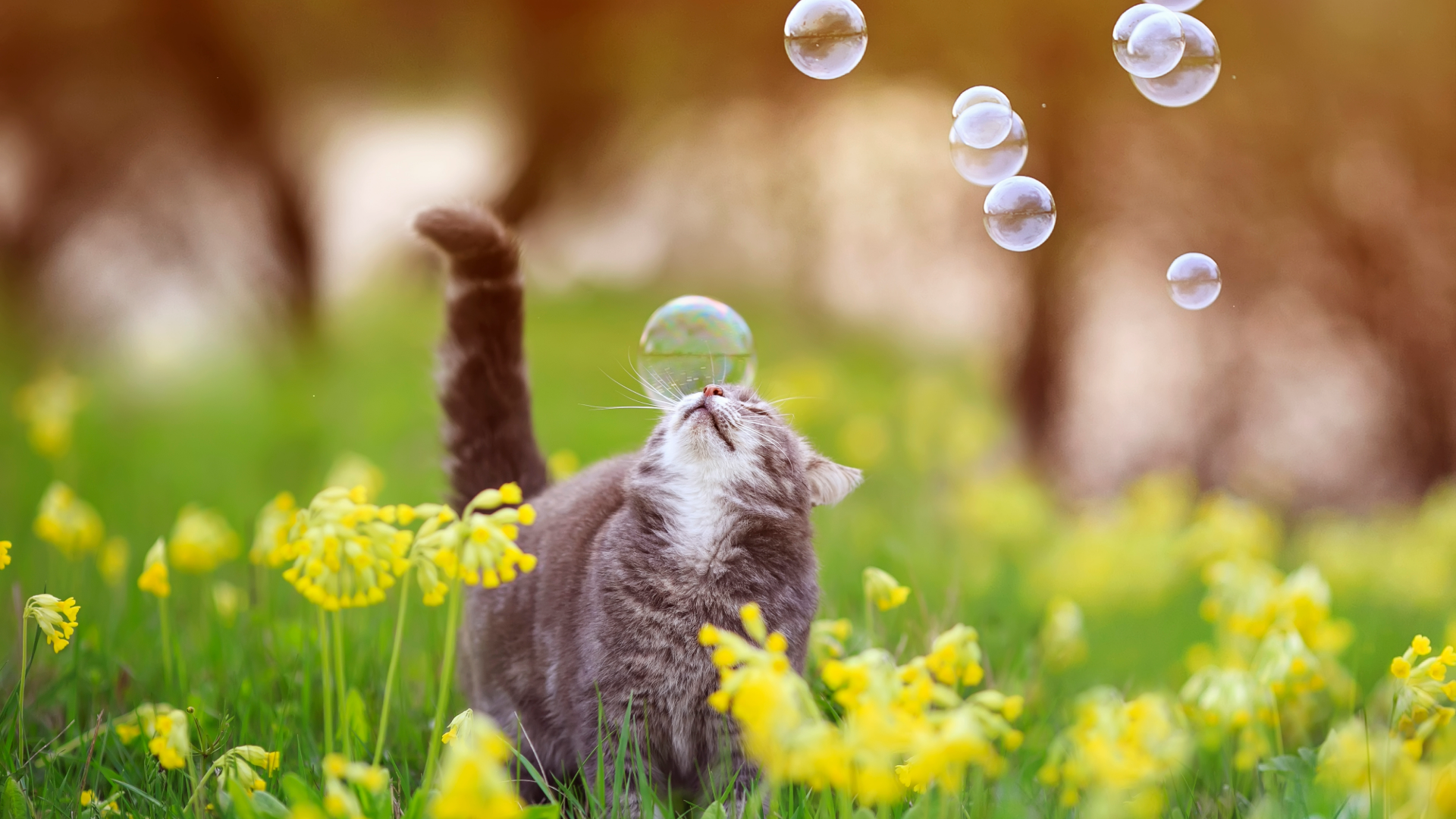
7. Blow bubbles for your cat to chase
“Try blowing bubbles for your cat," Dr MacMillan suggests. "The random movements of the bubbles will encourage your cat to get moving and chasing. You can even buy flavored bubbles for pets which might stimulate them further."
This one is super fun if you have kids in the house – and equally as fun if you don't. Trust us, your inner child will love it!
Catit Catnip Bubbles | Amazon
Infused with catnip oils, these non-toxic bubbles are a great way to grab your feline's attention. They'll have hours of fun chasing and jumping after them – and it will cost you less than $10.
How long to play with a cat
Regular play sessions are vital for your cat's mental and physical wellbeing, but how long and how frequent should these sessions be? Here's what Dr MacMillan has to say:
"Cats need 20–30 minutes of activity each day, depending on their age and health status. However, for most cats, this is broken up into several short play sessions rather than one big long one.
“Play is important for cats as it keeps them both physically and mentally fit. Play helps your cat to bond with you, as well as allowing them to express natural behaviors. In my experience, increasing playtime is one of the best things you can do to help cats suffering from boredom, boisterousness, or destructive tendencies."
While playing with your feline friend is important for strengthening your bond, there will always be times when you're too busy to engage. In those instances, we recommend having some of the best automated cat toys on hand that your cat can play with independently.
How do I get my cat interested in toys?
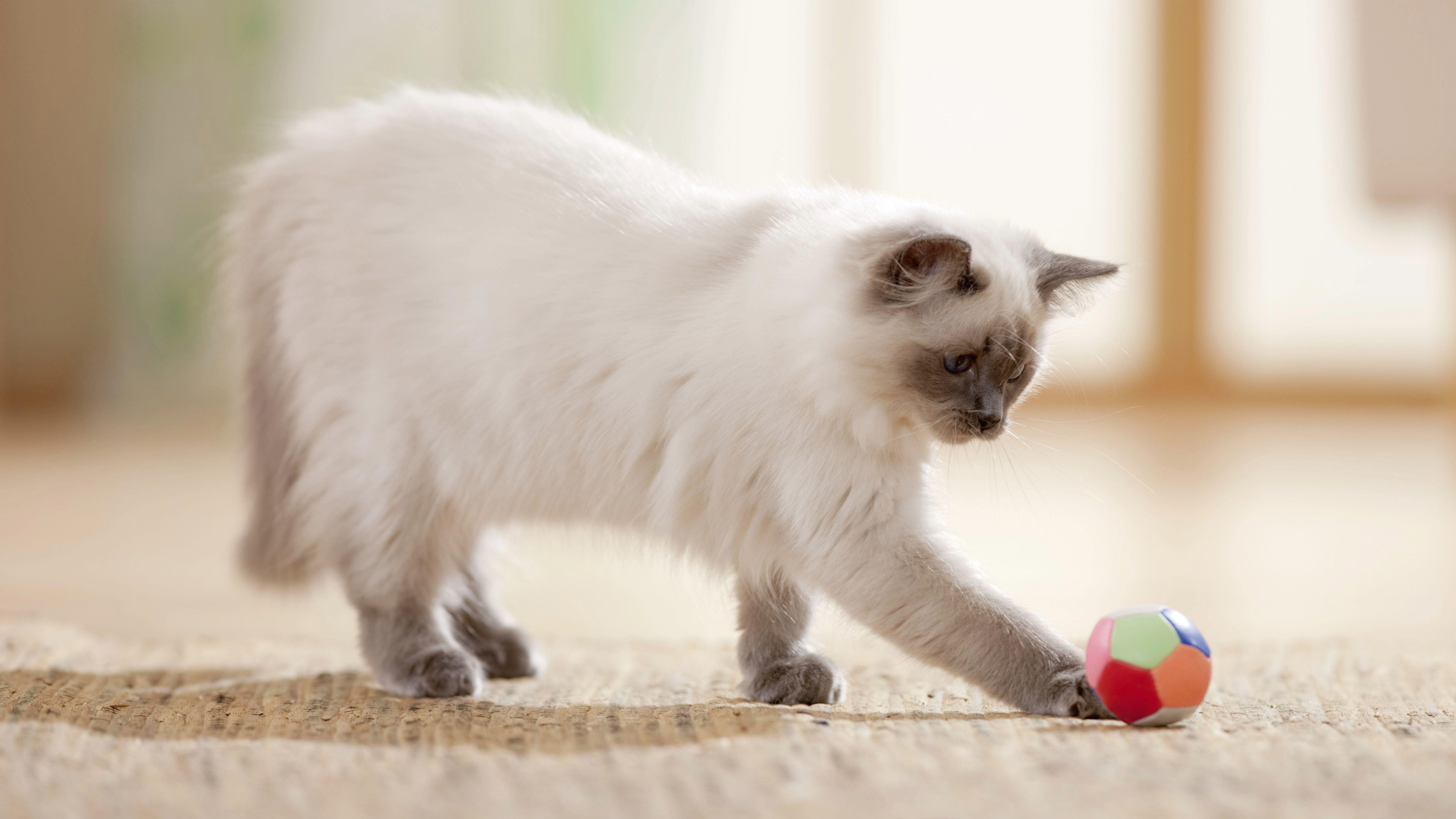
Some cats are more playful than others, but all cats can benefit from play – it can just take a bit of experimenting to find the sort of toys, games and pace that your cat responds best to.
"Try a variety of different toys with your cat," Dr MacMillan suggests. "While some might go mad for a fishing rod style, others prefer crinkle balls or a kickeroo. When purchasing your toys think about the ones that most resemble prey, with random movements or sounds to encourage interaction.
"Have a toy rotation system too, so that you keep things fresh and interesting for your cat. You can help encourage them to play by rewarding their efforts with a small treat or lots of verbal praise. Catnip can work wonders for some cats too. This natural stimulant can persuade some cats to chew or roll around on their toys."
Looking for more ways to entertain your feline? Learn how to play with a cat and how to play with a kitten. Or, read more advice on how to entertain a cat that doesn't like toys.
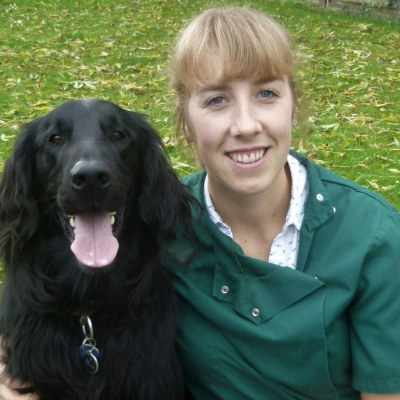
Rebecca is a veterinary surgeon who graduated in 2009 from the Royal Veterinary College in London. She has a wealth of experience in first opinion small animal practice, having done a mixture of day-to-day routine work, on-call emergency duties and managerial roles over the years. Rebecca enjoys medicine in particular and she is proud to have recently achieved a BSAVA postgraduate certificate in small animal medicine (with commendation).
Edited by Megan Milstead.
This page was last updated in May 2025 by Kathryn Williams.

Kathryn is a freelance writer who has been a member of the PetsRadar family since it launched in 2020. Highly experienced in her field, she's driven by a desire to provide pet parents with accurate, timely, and informative content that enables them to provide their fur friends with everything they need to thrive.
Kathryn works closely with vets and trainers to ensure all articles offer the most up-to-date information across a range of pet-related fields, from insights into health and behavior issues to tips on products and training.
When she’s not busy crafting the perfect sentence for her features, buying guides and news pieces, she can be found hanging out with her family (which includes one super sassy cat and a kitten), drinking copious amounts of Jasmine tea and reading all the books.
She has written for a range of publications, including Fit&Well, Top Ten Reviews, LiveScience, Goodto, and Product Hunt.
